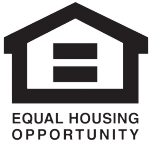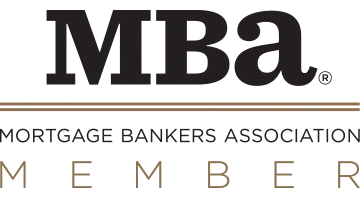A No Income Verification Mortgage is an attractive option for potential homeowners and real estate investors with consistent income but may need help providing traditional documentation.
These types of mortgages are ideal for those with hard-to-document cash flow sources, such as freelance or self-employed workers and investors.
No income verification mortgages provide flexible funding options, allowing borrowers to purchase or refinance a home without providing documentation of their income. This blog will discuss the benefits of no-income verification loans and how they could benefit real estate investors.
Table of Contents
What is a No Income Verification Mortgage?
A no-income verification mortgage is a home loan that does not require proof of income when applying. This type of home loan is attractive to borrowers with inconsistent incomes, such as freelance workers or self-employed individuals.
Unlike other mortgage types, no-income verification mortgages are not in control by a borrower’s credit score and provide more flexibility in repayment terms.
As per the Federal Reserve Bank of St. Louis, no doc loans accounted for approximately 6.5 percent of all closed mortgage loans in 2020.
What are the Benefits of a No Income Verification Mortgage?
No-income verification mortgages offer numerous benefits, making them an attractive option for potential homeowners. Here are some benefits of a No Income Verification Mortgage:
- Quicker funding process: Since substantially fewer documents are required, no-Income Verification mortgages can be approved and funded much faster than other loan products. It can be especially beneficial for those needing to purchase or refinance quickly.
- Less strenuous qualification requirements: People with a poor credit history or low income may find it easier to qualify for a no-income verification loan than a standard loan.
- Privacy: Since no-Income Verification, loans do not require standard income documentation; borrowers can keep their financial information confidential.
- Simplicity: No-income verification loans are more straightforward and more accessible to obtain than other loan products.
- Easier debt consolidation: Borrowers may opt for a no-income verification loan if they want to use it for debt consolidation purposes since they do not need to provide financial statements or other documentation of their income or assets.
No-income verification mortgages offer many benefits for those unable to provide documentation of their income.
By offering more flexible funding options, no-doc loans can make it easier for borrowers to purchase or refinance a home without the hassle and paperwork of traditional financing.
Types of No Income Verification Loan
No Income Verification loans come in several forms: Bank Statement loans, Debt Service Coverage Ratio, Stated Income Loans, and Real Estate Investor Mortgages. We will now read about them in greater detail.
1. Bank Statement loan
Bank Statement loans require borrowers to provide 12 or 24 months of bank statements as proof of their cash flow. This type of loan is especially beneficial for self-employed workers with inconsistent incomes. Read this to get a bank statement mortgage in 5 easy steps.
Requirements for Bank Statement Loan:
- 12 or 24 months of bank statements
- Low-credit score borrowers may need additional documents
- Proof of cash flow and sufficient liquid assets to cover the loan’s payments.
Find out how much you can borrow using your bank statement income with our Bank Statement Calculator!

Pre-qualify for a Bank Statement Loan.
No Paystubs or W2s Required.
2. Debt Service Coverage Ratio (DSCR) Loan
A Debt Service Coverage Ratio is a critical factor in no-income verification loans. It measures the borrower’s ability to cover their payments and other expenses. It is a loan program for real estate investors, and the only qualifying factor is your investment property must generate enough income to cover the mortgage payments.
It is also the most accessible loan qualification since no income verification is needed.
Most no-income verification loan products require a minimum DSCR of 1. In addition, the borrower must have at least 15 percent more income than their total debt payments, including taxes, insurance, and mortgage payments.
Requirements for Debt Service Coverage Ratio:
- A minimum of 1 DSCR
- No income documents are required
- Lenders will accept Lower credit scores with additional documents.

Pre-qualify for a DSCR Loan in a Few Clicks.
No Paystubs, W2s, or Tax Returns Required.
3. Stated Income Loan
Stated Income Loans are more flexible than traditional mortgages, allowing borrowers to state their income for people who do not wish to provide standard documents such as W-2s or tax returns.
As a result, stated income loans are best for those with steady but hard-to-document incomes, such as business owners and investors.
Requirements for Stated Income Loan:
- Borrowers state their income
- Documentation of assets may be required
- Borrowers must provide proof of identity
Now that we have learned about four different no Income verification loans, we will learn about the qualification for a no-Income Verification mortgage.
What is the Qualification for No-Income Verification Mortgages?
Real estate investors must meet specific requirements to qualify for a no-Income Verification mortgage. There are six essential requirements that you must meet when applying for a no-Income Verification loan:
- Borrowers must have at least a 620 or higher credit score to qualify for a no-doc loan.
- A down payment of at least 30% percent is typically required, although some lenders may ask for as little as 20%.
- Lenders will also consider the borrower’s debt-to-income ratio and employment and residency history.
- To guarantee the accuracy of your financial situation, you may need other forms of proof like bank statements and tax returns.
- You will also need employment history or self-employed income.
- The property must meet specific requirements, such as being a single-family home or condominium in a good area.
- Lastly, the borrower must pay for mortgage insurance on no-doc loans. It helps protect the lender if the borrower defaults on the loan.
If you want assistance with the loan qualifications, you can contact a lender through us, who can assist you with a no-income verification mortgage.
Who Qualifies for No Doc Mortgages?
No-income verification mortgages are ideal for borrowers with steady and consistent but hard-to-document sources of income, such as freelancers, self-employed business owners, and investors.
Self-Employed Borrowers
Self-employed borrowers are one of the primary groups that benefit from no-doc mortgages.
- Studies show that self-employed individuals make up more than 15% of all mortgage loan originations.
- Moreover, nearly 28.2% of all homebuyers in 2019 were self-employed, which predicts an increase as entrepreneurs and freelancers grow.
A No-income verification mortgage can provide self-employed borrowers with the flexibility and convenience of financing a home without giving traditional income documentation.
With these loans, borrowers can typically keep their financial information confidential and work towards their homeownership goals. Read the complete guide to a self-employment mortgage here.
Freelance Workers and Contractors
No-documentation mortgages are also an attractive option for freelance workers and contractors.
- Recent statistics show that the number of freelancers in the US increased by 3 million between 2019 and 2020, with a growing trend among young people to choose flexible working arrangements over traditional employment.
It can make obtaining a mortgage loan through traditional means challenging, as these workers may need a documented regular and consistent income.
A no-documentation loan provides them with an alternative source of financing without the need to provide definitive proof of income. As a result, it makes it easier for freelancers, contractors, and other self-employed professionals to secure the mortgage they need to buy a house.
Investors or Foreign Nationals
No-documentation mortgages are also an excellent option for investors or foreign nationals. Investors can also use a no-income verification mortgage loan when acquiring rental properties, as the loans allow them to access financing without providing income or employment verification.
Similarly, foreign nationals who cannot provide definitive proof of income may benefit from no-doc mortgages.
- Approximately 22% of all real estate investors’ acquisitions in 2019 used some no-income verification mortgage, as they provide a way to secure financing without formal income verification.
- Overall, a no-income verification mortgage is an ideal option for those seeking a flexible and convenient source of financing for self-employed individuals, freelance workers, contractors, real estate investors, and foreign nationals.
With a no-doc loan, borrowers can secure the financing they need without providing potentially sensitive income information.
What to Consider Before Applying for A No Income Verification Mortgage
Before applying for a no-income verification mortgage, it’s essential to consider this type of loan’s potential risks and drawbacks. For example, no-doc loans often require larger down payments than traditional mortgages and carry higher interest rates.
We will now see some aspects that you should keep in mind before applying for a no-income verification mortgage:
1. Cost of the Loan
Before applying for a no-income verification mortgage, it is essential to consider the cost of the loan.
- According to a National Association of Homebuilders report, average rates on no-income verification mortgage loans can range from 7-9%, significantly higher than traditional or conforming mortgages that typically range from 3.5-4%.
- Furthermore, fees associated with a no-income verification mortgage loan are usually substantially higher, with origination fees and other closing costs adding up quickly.
Consequently, it is vital to research and ensures you understand all the potential costs of a no-income verification mortgage before committing.
2. Loan Interest Rates
The no-income verification mortgage rate is 7.82%-8.82%. These rates are usually higher from 1.5-2.5% than conventional mortgage rates of 6.32%.
Without government-backed insurance, no-doc loans usually have higher interest rates than conforming and conventional mortgages. It can become a problem if market trends shift and interest levels rise: people taking out these no-income verification home loans may need help to make payments due to the increased financial burden.
Therefore, no-income verification mortgage borrowers should consider their current and future financial situation before committing to a loan.
3. Documentation Required
The no-income verification mortgage does not require traditional income documents such as W2s or pay stubs. Still, you will need other documentation forms to verify your financial statuses, such as bank statements and tax returns.
Understanding what kind of paperwork lenders will need from you before applying for a no-income verification loan is essential.
Make sure to review the lender’s policy carefully to ensure that you can provide the necessary documents.
4. Availability of Funds and Other Loan Requirements
Before applying for a no-income verification mortgage, it is crucial to consider your availability of funds and other loan requirements. Other loan requirements may include an appraisal of the property and credit score.
Moreover, some mortgage lenders may require you to have cash reserves in the bank before approving your application.
This money could be used towards closing costs or to cover any potential defects in the loan process. Understanding these standard requirements and having adequate funds available can go a long way toward helping you secure a no-income verification mortgage.
5. Pros and Cons of No Income Verification Mortgage
Pros:
- No need to supply proof of income: The most obvious benefit of a no-income verification mortgage is that you don’t have to provide evidence of your income to qualify for the loan. It can be especially beneficial if you’re self-employed or work outside of a traditional job, as verifying your income is often difficult.
- Quick closing time: These loans can close quickly since no paperwork is involved. It can work for borrowers who need cash immediately or have tight timelines.
- Easier debt-to-income ratio qualification: With no income verification loans, lenders often use other factors such as credit score and assets to determine whether you can handle monthly payments on the loan.
- Flexibility: Borrowers with a more stable income or employment history could still qualify for a loan with this type of mortgage.
Cons:
- High-interest rates: Generally speaking, a no-income verification loan comes with higher interest rates than a conventional mortgage loan due to the added risk the lender takes.
- Loan limitations: Most no-doc mortgages are limited in the loan amount and cannot exceed certain thresholds depending on the specific lender and program offered.
- Low credit score: Due to the no-income verification aspect of no-doc mortgages, lenders may require a higher credit score than they would for a conventional mortgage loan.
6. Credit Score Requirements
Lastly, no-income verification mortgages typically require higher credit scores than conventional loans. As a result, no-doc borrowers must demonstrate an excellent credit score for approval for a no-income verification loan.
It means no-doc borrowers must have a minimum credit score of 620 or higher and should work hard to maintain an impeccable payment history with no late payments.
We have learned about no-income verification loans in-depth, so it’s time to apply for one.
How to Apply for a No Income Verification Mortgage?
Are you looking for a loan but need official income documents to prove it? Then, applying for a no-income verification mortgage loan could be the perfect solution.
These types of mortgages allow applicants to demonstrate their creditworthiness without providing traditional forms of income documentation. Here are the actions you need to take to apply:
Step 1: Gather the required documents
You must provide documents like bank statements, higher credit scores, rental history, and proof of assets to apply for a no-income verification mortgage.
If they ask, you may also have to provide a letter from your employer or accountant verifying your income source.
Step 2: Compare lenders
Do your research on different no-income verification lenders before settling on one. Compare interest rates, fees, loan amounts offered, customer service reviews, and other critical criteria when deciding which lender is right for you.
You can also check out this blog, which will give you seven easy tips to find the best lender.
Step 3: Submit an application
Once you have chosen a lender to work with, it’s time to apply. The application process typically involves filling out forms online or in person at the lender’s office.
The no-income verification loan process is quicker than traditional mortgages, so you should receive a response from your lender within days.
Step 4: Accept the terms of the loan
Once the lender agrees with your application, you will receive loan terms and conditions. Carefully review all documents to ensure you agree with the terms before signing.
Income verification mortgages can only provide borrowers an easy way to obtain a loan if they submit paperwork or undergo a lengthy approval process. However, as long as you understand the risks and meet the basic requirements, a no-income verification mortgage can be a convenient option for qualifying borrowers.
By taking these steps into account, you can confidently apply for financing without submitting additional income verification!
Is No-Income Verification Mortgage Safe?
Despite potentially being a good option for those seeking a loan, no-income verification mortgages can come with significant risks.
With lenders not needing income information from the borrower, they heavily utilize their credit score and other financial indicators as forms of assessment – meaning any blips in your finances could cause rejection or astronomical interest rates on a loan.
Also, no-doc loans usually come with higher rates than traditional mortgages due to the additional risk lenders take on. So, all in all carefully read the documents and terms before signing up.
Conclusion
No income verification mortgages offer an alternative to traditional loans for borrowers needing more documentation to qualify, such as those with inconsistent or hard-to-document incomes.
Understanding the pros and cons, loan requirements, and application process can help you make an informed decision when applying for this type of mortgage. With the right amount of preparation and study, no-income verification loans can be an ideal solution for borrowers looking to purchase a home without proving their income.
In conclusion, a no-income verification loan offers many benefits for those willing to provide traditional forms of documentation for their loan application.
Key Takeaways
Here are some key takeaways to remember about no-income verification mortgages:
- No-income verification mortgages offer an alternative to traditional loans for borrowers with inconsistent or hard-to-document incomes.
- Three types of no-income verification loan programs include bank statement loans, Debt Service Coverage Ratio, stated income loans, and Real Estate Investor Mortgages.
- Borrowers should know the risks associated with no-income verification mortgages, such as higher interest rates and stricter eligibility requirements.
- Borrowers must gather necessary documents, hunt down lenders, file an application, and gain approval for a no-income verification mortgage.
- Consider your financial needs carefully and research lenders thoroughly before applying for a no-income verification loan to ensure the best possible outcome.
- With the proper preparation and research, no-income verification mortgages can be an ideal solution for borrowers who need to purchase a home without proving their income.
- It is also one of the home loans that are particularly promising for investors to opt for among all the loans in the market.
- Ultimately, no-income verification mortgages can help make the home-buying process easier for those looking to avoid traditional forms of documentation. Good luck!
Frequently Asked Questions
Q. What is a no-income verification mortgage?
A. A no-income verification mortgage is a type of loan that requires no formal proof of income when applying.
These loans are often sought by those with hard-to-document sources of income, such as freelance workers or self-employed business owners.
Q. What credit score is needed for a no-income verification mortgage?
A. The exact credit score required will depend on the lender. Generally, no-income verification mortgages will require a minimum credit score of 620 or higher.
Q. What should be your minimum income to buy a house?
A. The income you will need to buy a house depends on several factors, such as the loan type and size and your credit score. Generally, lenders recommend having a minimum income of two to three times the amount of your monthly housing payment.
Q. How can I buy a house without two years of income?
A. You may be able to qualify for a no-income verification loan, which requires no formal proof of income when applying.
Alternatively, you may qualify for financing by providing bank statements and proof of other sources of income.
Q. Can you get a mortgage with no income history?
A. No income verification mortgages are designed for those with no income history or hard-to-document incomes. You will likely be required to provide other verification forms, such as bank statements and tax returns.
Q. Are no income verification mortgages safe?
A. No-income verification mortgages can be riskier for lenders, so ensuring you meet the basic requirements and understand the risks involved is vital. In addition, ensure you work with a reliable lender and review all loan terms before signing.
Q. Where can I get a no-income verification mortgage?
A. You can search online for lenders who specialize in no-income verification mortgages. However, you must compare rates and terms to find the best deal.
HomeAbroad also provides various no-income verification mortgage options to meet your needs. Contact us today for more information about our lenders.
Q. Can I get a loan without a verifiable income?
A. Yes, no-income verification mortgages are designed for borrowers who do not have verifiable income. These loans may come with higher interest rates due to the added risk for lenders. Ensure you understand the loan terms and are comfortable depositing additional debt before signing.
Q. What are the no-income verification interest rates?
A. The no-income verification mortgage interest rates will vary depending on the lender. Generally, no-income verification loans may come with higher interest rates due to the increased risk taken by lenders.
It is essential to compare different no-income verification interest rates from several lenders before deciding. No-income verification interest rates range from 7.82%-8.82%, 1.5-2.5% higher than conventional mortgage rates of 6.32%.
Q. How to get a mortgage loan with no income?
A. Getting a no-income verification mortgage will require you to provide other verification forms, such as bank statements and tax returns. Additionally, borrowers must typically have a minimum credit score of 620 to qualify for this type of loan.
Q. When would a lender allow a no-doc loan?
A. Some lenders may only allow doc loans for borrowers with a good credit score, sufficient assets, and no history of late payments.
Additionally, these loans may be an option for those with no income history or hard-to-document incomes, such as freelancers and self-employed business owners. Checking with lenders for specific eligibility requirements and loan terms is essential.
Q. What is the lowest income to qualify for a mortgage?
A. The amount required to qualify for a no-income verification mortgage will vary depending on the lender.
Q. Can you get a home loan with No Income Verification?
A. Yes, no-income verification mortgages are designed for borrowers who do not have verifiable income. Generally, no-income verification mortgages will require a minimum credit score of 620 or higher.
Q. What is Income for mortgage qualification?
A. income for mortgage qualification is generally defined as any income that can be verified and used to meet the lender’s requirements. It may include wages, benefits, rental income, investment income, and more.
No-income verification mortgages offer opportunities for those with no or hard-to-document incomes to purchase a home. You can also learn more about using rental income to qualify for a mortgage.
Q. Where can I get a no-income verification mortgage?
A. Lenders, including online and traditional financial institutions, offer no-income verification mortgages. You can also connect with HomeAbroad, who can assist you with finding a lender who provides a no-income verification mortgage.
Connect with a no-income verification mortgage lender.

















